Combat aircraft. Pain and sorrow like a king
Disappeared from history
Indeed, it would be better if Armstrong-Whitworth lost the competition then. There would not be this nightmare and headache - the search for a place where their offspring can be adapted.
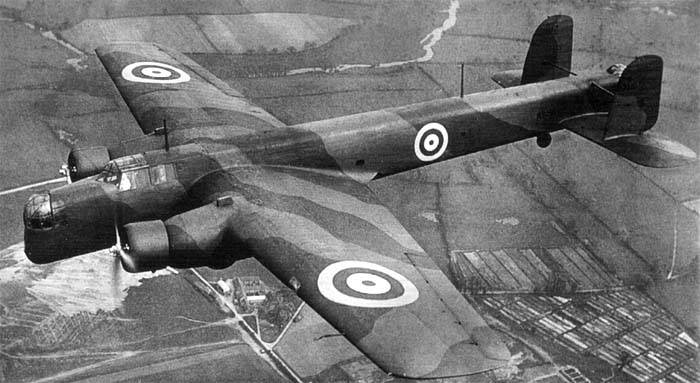
From 1937 to 1945, throughout the Second World War, "Wheatley" was a bomber (not for long, thank God), a night bomber, a transport aircraft, a glider towing aircraft, an anti-submarine patrol aircraft ...
But once the war was over, the RAF did not rush, of course, with axes at the surviving Wheatleys. But, probably, there were few planes that disappeared so quickly into stories.
But let's start in order.
You will not confuse the Wheatley with any aircraft. He is very peculiar in appearance. Such a strange tail unit ... Such a peculiar fuselage ... And the whole plane is somehow very clumsy in appearance. And not only in appearance. In fact, he was even more awkward than he looked. But "Wheatley" had some kind of excuses for that.
AW23 - seaplane tanker
This story began in a very distant aviation by the standards of 1931, when the British Air Ministry announced a competition for a transport aircraft, which, if necessary, could be converted into a bomber at minimal cost.
Bristol, Handley-Page and Armstrong-Whitworth fought for the order.
The Armstrong-Whitworth designers designed the aircraft under the AW23 designation.
They ended up with a very large monoplane with a low wing and a spacious fuselage. The aircraft had a very original tail unit - the keels were in the middle of the stabilizer and were supported by additional horizontal beams. Original, but cumbersome.
Retractable landing gear was made progressively. But they did not rise completely, but only up to half of the wheels, which were retracted into the engine nacelles. It was believed that in this design, the wheels would be able to protect engines from damage during an emergency landing on the belly.
The engines at that time were quite: Armstrong-Siddley "Tiger" VII, 14-cylinder radial air-cooled, 810 hp. from.
The prototype AW23 made its first flight on June 4, 1935. The plane turned out to be quite good, the testers noted decent controllability, stability and reliability. However, AW23 lost the competition. And the Handley Page HP.51 "Harrow" and Bristol 130 "Bombay" went into production for the RAF.
The only copy of the AW23 was converted into a seaplane tanker. And until 1940, the plane was fueling the "Short" seaplanes. And in 1940 it was destroyed during a raid by German bombers.
Wheatley heavy night bomber
Meanwhile, a new competition began. A heavy night bomber that could fly 2 km at a speed of at least 000 km / h. For comparison: the Fairey "Hendon" bomber was then in service with a range of 360 km and a speed of 1 km / h.
In this situation, "Armstrong-Whitworth" had a huge advantage, since it already had a virtually finished aircraft that fit the terms of the competition. And so it happened, and in August 1935 the firm received an order for 80 aircraft.
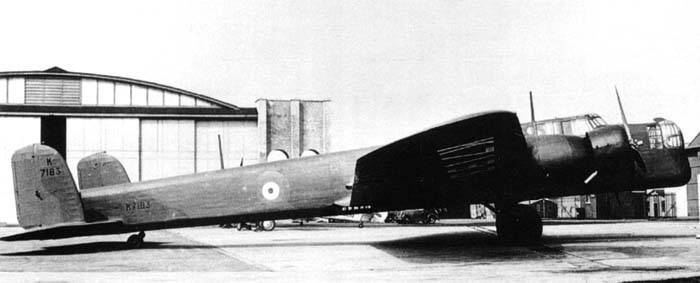
The plane was named "Whitley" after the suburb of Coventry, where the Armstrong-Whitworth plant was located.
The new AW38 aircraft, as expected, turned out to be almost a copy of the AW23, retaining its external features - a short and wide wing of a thick profile, a two-fin tail with originally located keels, and the location of firing points.
By the way, the designers saved so much by not fulfilling the requirements of the terms of reference for weapons, which should have consisted of four 7,69 mm machine guns. The Armstrong-Whitworth decided that the bomber did not need onboard installations, two machine guns would be enough: one in the bow, the other in the stern.
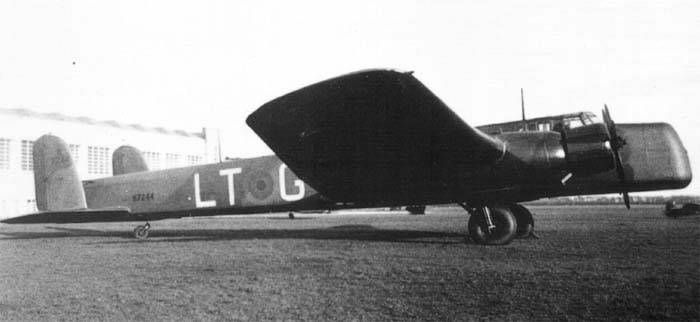
The wing was moved from the lower to the middle position in order to more conveniently place the bomb bay. To further reduce the landing mileage, the designers installed hydraulically operated flaps along the trailing edge. As a result, it really turned out to be a completely normal night bomber. A low landing speed, decent flight characteristics, one and a half tons of bombs - at that time this was quite enough.
Armament AW38
Defensive weapons, let's say, were. Branded Armstrong-Whitworth turrets with 7,69-mm Lewis machine guns. The turrets were rotated with the help of a pedal drive by arrows, lifting the barrels of machine guns was also manual. The front shooter performed the duties of a bombardier, for which he had to leave the machine gun and lie on the floor of the cabin to the sight in a special hatch.
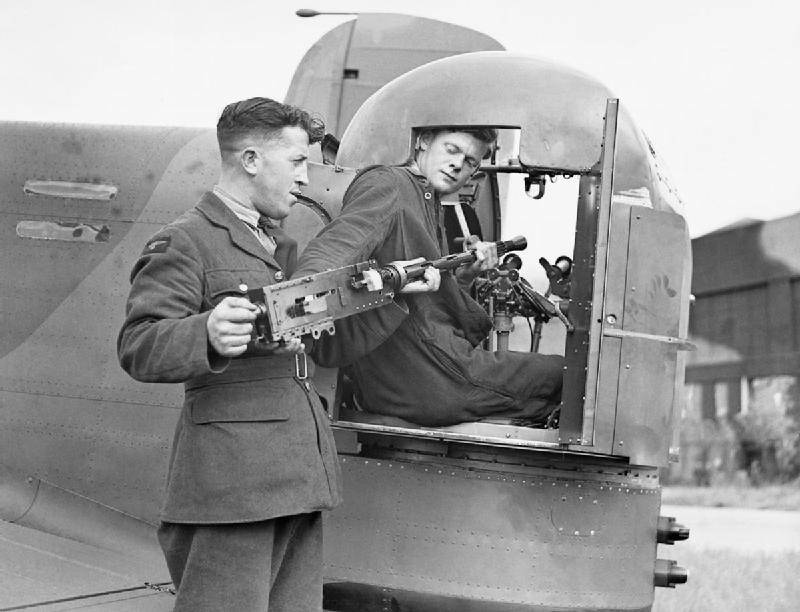
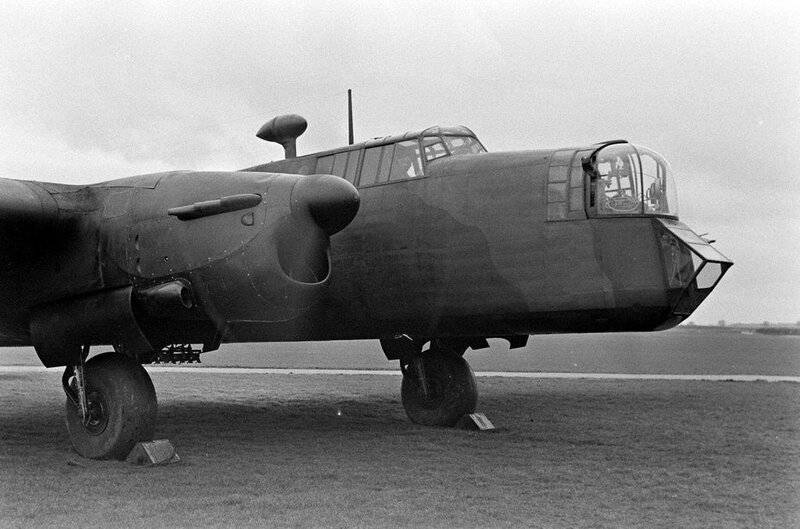
The pilots were stationed nearby, above the bomb bay. The co-pilot usually performed the duties of a navigator, for which his seat could move back and turn to the navigator's workplace behind the back of the crew commander. The radio operator was stationed behind the pilots.
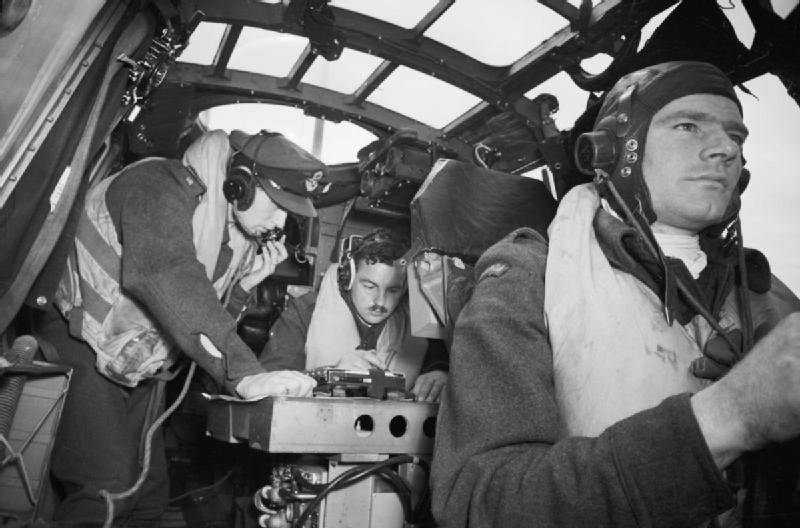
The aircraft was very seriously equipped by the standards of that time. Since the flights of night bombers are not an easy matter, the Wheatley was equipped with an autopilot and a radio compass.
There was a bomb bay under the pilots and radio operator. The main bomb bay contained four bomb racks that could hold one 500 lb (229 kg) bomb each.
Another 12 small bomb bays were located in the center section and wing consoles. The center-section bomb bays held one 250 pound (113 kg) bomb, and the cantilever bombs each held a 112 pound (51 kg) or 120 pound (55 kg) bomb.
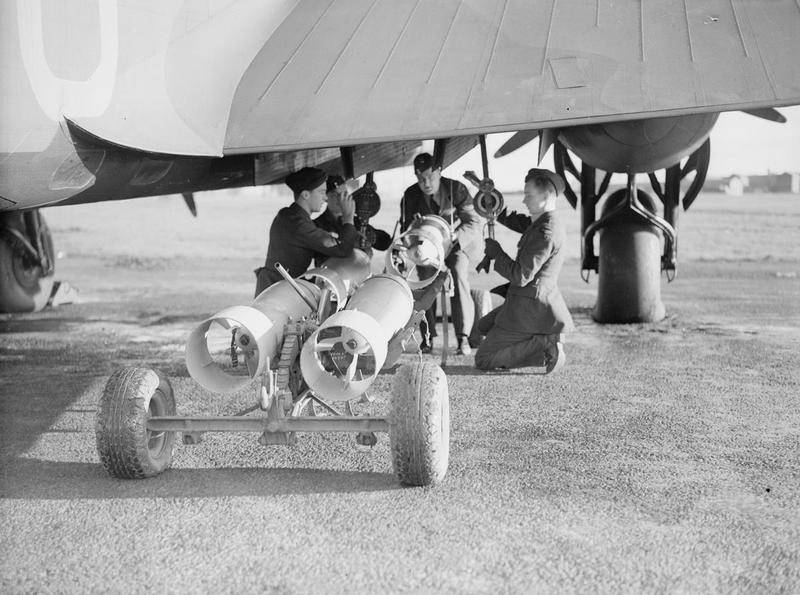
Behind the fuselage bomb bay there was another small separate compartment for lighting bombs.
The bomb release drive was mechanical. The cables released the locks of the bombs, under the weight of the bombs, the hatch doors were opened, and then closed with the help of ordinary rubber bands.
Wheatley's Challenges
Tests of the first copies of the Wheatley showed that it is a very reliable aircraft, obedient in control and simple for technicians. In terms of flight data, the Wheatley outperformed both the Hendon and Hayford, especially in terms of speed.
But at the global level, the novelty did not look very good. By that time, Italian cars appeared from the Savoia Marchetti S81 (which developed 340 km / h) and S79 (which accelerated to 427 km / h). The Wheatley, with its 309 km / h, looked rather weak. The ceiling was also not the Whitley's forte, although it was still a bomber. But even the outdated Hayford biplane, which climbed 6 m, was overtaken by him, while the maximum height for the Wheatley was 400 m.
But it so happened that the Royal Air Force did not even have another car in the future. Hampden and Wellington were delayed in construction and testing. The Handon turned out to be a completely useless aircraft and after a series of accidents and disasters it was removed from service.
And therefore, when the answer to the beginning of the growth of the Luftwaffe was required, there was nothing better than the Wheatley at hand. It was decided to eliminate the most critical flaws and take the vehicle into service. The air already smelled like war, and the AW38 still met the requirements of the Air Force in a number of parameters.
The aircraft was equipped with more powerful "Tigers" of the XI series with a capacity of 935 liters. sec., which raised the maximum speed up to 330 km / h. The wing was slightly changed, making V by 4 degrees, which had a positive effect on the stability of the aircraft. There are new hydraulically powered turrets designed for the more modern Vickers K machine guns.
The Air Force wanted to order 320 aircraft. The capabilities of Armstrong-Whitworth showed that no more than 200 vehicles could be produced within the time frame of the agreement. And production began.
Production machines expectedly had flight data, much more modest compared to prototypes. The speed is not more than 296 km / h and the ceiling is only 4 877 m. For comparison: the He 111, which was shining then in Spain, gave out 368 km / h and 5 900 m, respectively.
But, nevertheless, "Wheatley" began to replace the old "Hayfords" in parts.
Overall, I liked the plane. Mainly because it was simple (like a British bomber). This aircraft did not cause any problems for either the flight crew or the technical.
Modernization: "Merlin" pulled out
Modernization began simultaneously with production. For example, a retractable shooting tower under the fuselage with two 7,62-mm Browning Mk2 machine guns. It was a hefty duralumin barrel, glazed and weighing half a ton. It was installed not on all aircraft, since in the released position the product of the Fraser-Nash company FN 17 significantly reduced the already not brilliant speed of the Whitley.
With speed, everything was generally sad. "Wheatley" in this regard was inferior to all peers (from Germany, Japan, and even the USSR) by more than 100 km / h.
Something had to be done about it. First, we tried to fly around a plane with a Bristol Pegasus XX engine. Did not like. Then they put in a Rolls-Royce Merlin. It got better. "Merlin" produced 1 liters. from. at an altitude of 030 m. And with it "Wheatley" gave out 5 km / h. True, the plane was unarmed and fairings were installed instead of the turrets.
The Merlin X had a two-stage supercharger, which was very good for the engine's altitude and provided a wider range in terms of power. On takeoff, "Merlin" X developed 1 liters. from. ("Merlin" II gave 065 hp), and had a maximum at an altitude of 880 1 m - 720 1 hp. from.
Serial "Wheatley" series IV with "Merlins" accelerated to a speed of 393 km / h. The bomb load has also increased. Now it was possible to take up to 3 kg of bombs, two bombs of 178 kg and 908 bombs of 12 kg. In general, "Merlin" pulled out.
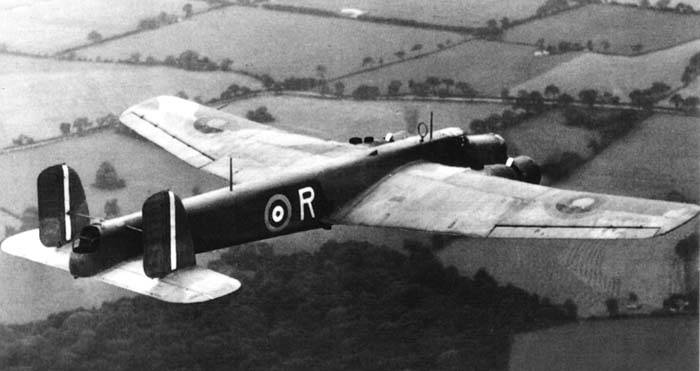
And the fourth series was immediately replaced by the fifth, in which a new Nash-Thompson turret with four Browning 7,62 mm machine guns was installed in the tail. This unambiguously increased the defensive firepower of the aircraft, but gave rise to the appearance of huge "dead zones" above, below and along the sides of the aircraft.
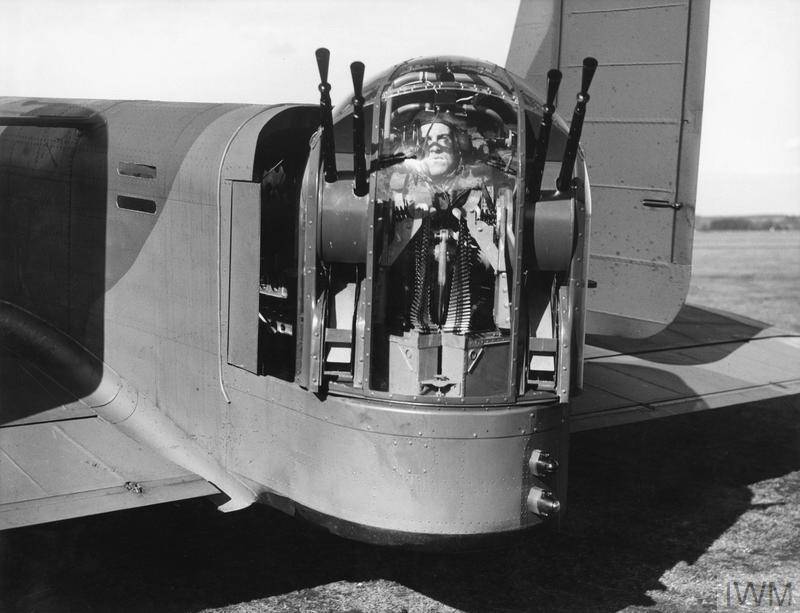
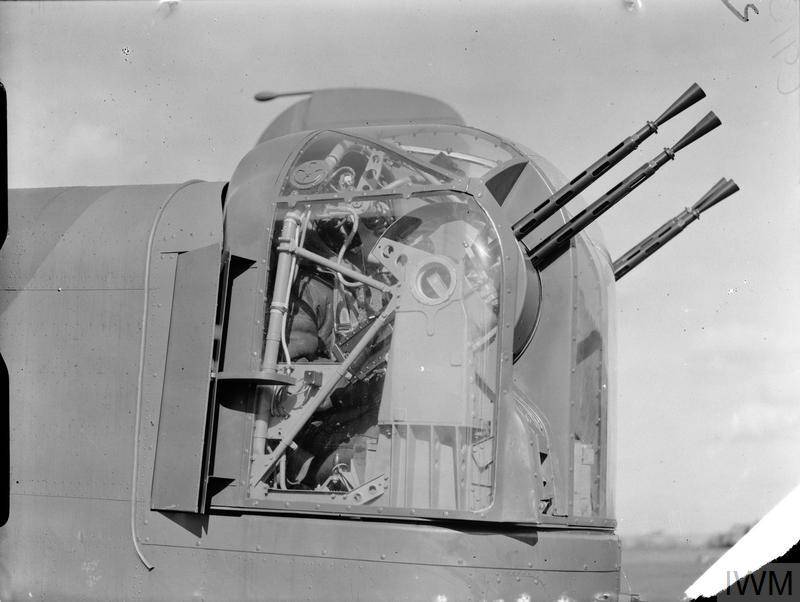
Quantity is more important than quality
And in this form, "Wheatley" went into mass production. And then the Second World War began. Even if the British wanted to change the Wheatley to something else on the assembly line, more modern, it was not so easy to do it.
In addition, the British Defense Department believed that quantity was sometimes more important than quality. Therefore, the feverish assembly of "Wheatley" only increased. And the plane itself was included in the top five most essential aircraft, along with the Spitfire, Hurricane, Blenheim and Wellington.
However, there were problems with mass production. The Merlins were needed on the Spitfires and Hurricanes in the Battle of Britain.
At the outbreak of the war, the Whitley made up one sixth of all RAF aircraft, and were armed with eight squadrons.
Paper baptism
The bombers received their baptism of fire in the raids on Germany. Conditionally combat, since it was not bombs that fell on German cities, but leaflets. On the night of September 3-4, 1939, after England entered the war, the Wheatleys scattered 6 million leaflets over Germany. For fear of receiving the same answer, the British refrained from using bombs.
And until the spring of 1940, the Wheatleys carried only paper.
"Strange War" did not imply bombing of ground targets. Therefore, the first real Whitley raid took place on the night of March 20, 1940, when 30 Whitleys and 20 Humpdens attacked the German seaplane base at Silt. One Wheatley was shot down by anti-aircraft fire, and the results of the raid were ineffective.
Normal combat work began only after the Germans captured Belgium and the Netherlands. Only then did the Wheatleys begin striking railroads and highways in order to impede the movement of German troops. And on May 15, a full-scale air war began.
Throughout the second half of May, the Wheatleys tried to bomb the refineries on the Rhine. The results were negligible, the disgusting training of pilots and navigators affected. On May 16, for example, out of 78 bombers that took off, 24 reached the target area. There is no need to talk about effective night raids with such training.
In June, a group of 36 Wheatleys were to fly over the English Channel, fly over France and Switzerland, bypass the Alps and bomb Turin and Genoa. Thirteen cars out of 13 flew. Already an achievement, but the damage was again minimal.
"Raids of a Thousand Bombers"
On the night of 26 August 1940, almost a year after the outbreak of World War II, the first British bombs fell on Berlin. Of the 81 bombers allocated for this operation, there were 14 Wheatleys.
Gradually the British pilots improved their level of training and the number of aircraft increased. Mannheim on December 7, 1940 bombed 134 aircraft, Hanover on February 10, 1941 - 221 aircraft, Kiel in April 1941 - two waves: 288 and 159 aircraft, respectively.
However, the further the intensity of the work of the British bomber aviation increased, the stronger the Luftwaffe fighters worked in response. And here the lagging behind "Wheatley" as a combat aircraft began to appear.
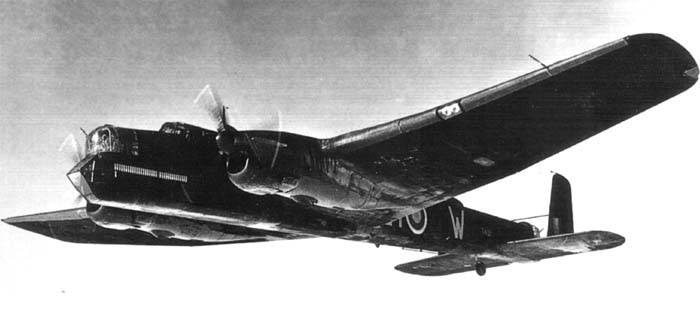
Slow speed, insufficient radius of action, weak defensive armament, lack of body armor - in all these indicators, the Wheatley was much worse than Wellington. Stirling and Halifax were on the way. There was no talk of any use during the day (even under fighter cover), so the night sky became the arena for Whitley's work.
But taking into account the flight characteristics of the Stirling and Halifax, which also began to fly at night, the value of the Whitley gradually became minimal.
Combat missions were assigned to more modern vehicles, and "Wheatley" began to be used for training and auxiliary purposes. The Whitley's last major military operation was the 30 April 1942 raid on Ostend. After that, all the squadrons armed with "Wheatley" began to re-equip with new equipment.
True, from time to time "Wheatley" from the training squadrons were attracted for massive raids on the German cities of Cologne, Essen, Bremen, Duisburg, Oberhausen, Stuttgart and Dortmund. The so-called "raids of a thousand bombers".
But the effectiveness was again low. The Luftwaffe pilots understood perfectly well that the defenseless Whitley was an excellent reason to draw the Abschussbalken, and did not rush to the Stirlings. Still, 8 machine guns and 2 - there is a difference, is not it?
So most of the Wheatley ended up in the training units. Everyone studied on them - pilots of multi-engine cars, navigators, radio operators.
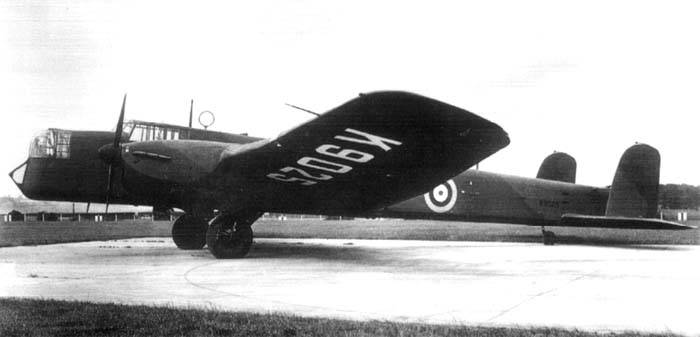
Anti-submarine patrol aircraft
The second largest place of use is aviation under the Coastal Command. There "Wheatley", able to stay in the air for a long time, was very useful. The role of the patrol anti-submarine aircraft was on his shoulder. But - in remote areas where the appearance of enemy fighters was not expected. There "Wheatley" could work day and night. But where the enemy fighter could work, there "Whitley" preferred not to fly.
Was the Wheatley as good as the patrol plane? Well, not quite. Weak defensive armament and speed made it a potential victim for enemy aircraft. But the bomb load made it possible to take additional tanks with fuel, and bombs, which could make a sad life for any submarine.
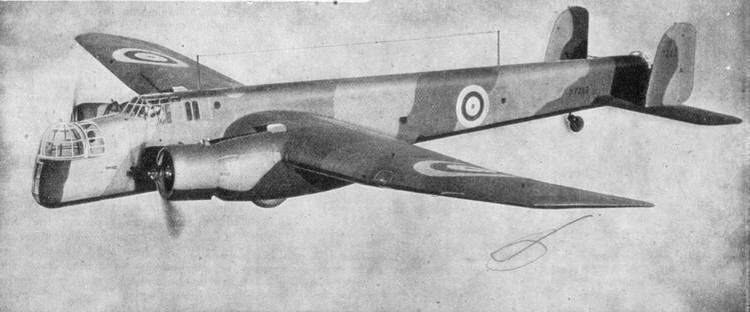
It's just that the Anson, which had been replaced by the Whitley, was even worse armed and even slower.
"Wheatley" Mk VII
The first use of "Whitley" against German submarines occurred in September 1939. And it turned out quite successfully. So much so that even a special modification of the aircraft was developed. It differed from the base one by the presence of four fuel tanks, which increased the flight range to 3 km, and the ASW Mk II radar for detecting surface ships.
Radar is a more than useful thing for such an aircraft, but the radar antennas were installed above the rear fuselage, receiving antennas - on the farms under the wings and under the nose. All this greatly worsened the aerodynamics and the speed dropped to 350 km / h, the ceiling and the rate of climb decreased. Plus, the mass has grown, since in addition to the radar and antennas, the locator operator and his equipment have also been added.
It was the Whitley Mk VII version. It was produced in the factory.
And the first victory over the German submarine was won by "Wheatley" of the 5th aircraft family. Whitley, 77th Bomber Squadron, attacked and sank U-705 in the Bay of Biscay. On November 30, in the same area, "Wheatley" VII of the 502nd Squadron won a victory: U-206 went to the bottom.
True, even here the Wheatleys were gradually, since 1942, replaced by more modern machines.
Transport and landing version of "Wheatley"
And of course, the former bomber could not help but become a transport aircraft. If you remove the rear turret, then in its place you get a good platform for dropping, for example, paratroopers. Great Britain was somewhat late with the creation of its own airborne forces, so during the course of the war it had to improvise.
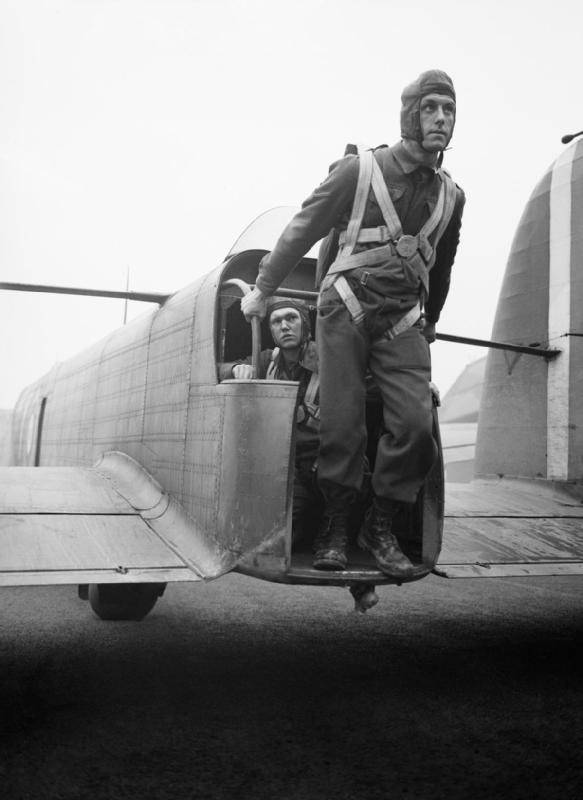
The Whitley could carry 10 paratroopers with full gear and 1 kg of cargo in bomb bays.
On February 7, 1941, 8 Wheatleys from the 78th Squadron transferred 37 specially trained parachutists-saboteurs to Malta. This was the first use of the Wheatley troop carrier.
And on February 27, 1942, in fact a year later, 12 Wheatleys of 51 Squadron were used in Operation Beating. The operation was completed more than successfully, a team of paratroopers from under the noses of the Germans in the city of Brunenwal stole the secret Würzburg radar.
Wheatley-towing vehicle
In the first half of 1942, three squadrons of towing aircraft were formed from "Wheatley", united in the 38th air group.
"Wheatley" 5th series could tow one glider type "Horse" or "Hotspar".
But it did not come to practical application. When the British decided to use gliders in amphibious operations, the Wheatley no longer remained in the army as tugs.
In the summer of 1943, the Wheatleys from the tug squadrons were again recruited to spread leaflets over Western European cities.
The last Wheatley left the assembly hangar in June 1943. A total of 1 units of all modifications were produced. In 814, all Wheatleys were declared obsolete and removed from service.
The Last Whitley - Britain's Pain
Armstrong-Whitworth retained one copy of the Whitley, which served until March 1949.
In general, the aircraft cannot be called successful. On the one hand, so many of them were made that it was impossible to simply “throw it out and forget”. The war was going on, and every plane that could benefit or damage the enemy had to do it.
Therefore, the entire first half of the war was spent trying to somehow stick the Wheatley somewhere. The plane was still too slow and too weakly armed for that war. Even in times of need, even in the night sky.
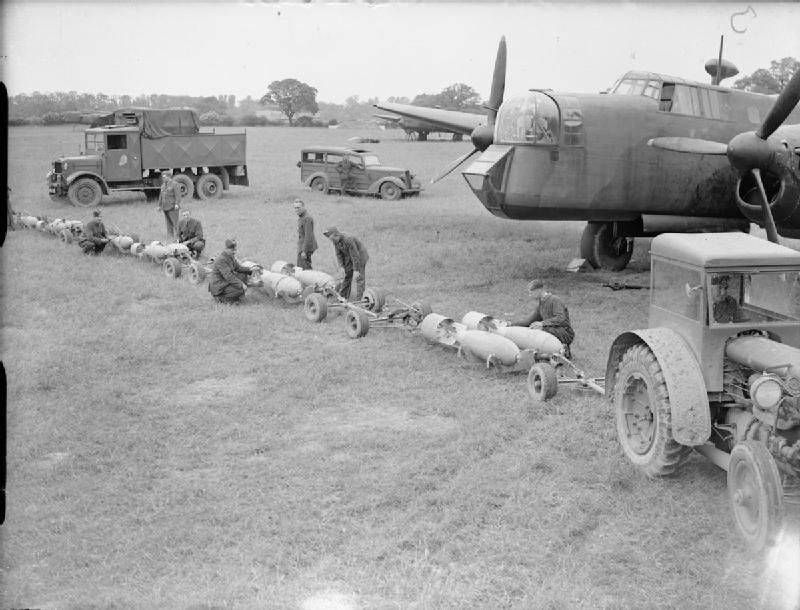
Indeed, the Whitley is the pain and sorrow of the RAF.
LTH Whitley Mk.V
Wingspan, m: 25,20
Length, m: 21,75
Height, m: 4,57
Wing area, square m: 105,72
Weight, kg
- empty aircraft: 8 707
- normal takeoff: 12 690
- maximum take-off: 15 075
Engines:
2 x Rollse-Royce Merlin X x 1145 HP from.
Maximum speed km / h: 364
Cruising speed, km / h: 336
Practical range, km: 2 400
Rate of climb, m / min: 240
Practical ceiling, m: 7 200
Crew, prs: 5
Armament:
- four 7,69 mm machine guns in an electrically controlled tail turret
- one 7,69 mm machine gun in the nose turret
- up to 3 150 kg bombs
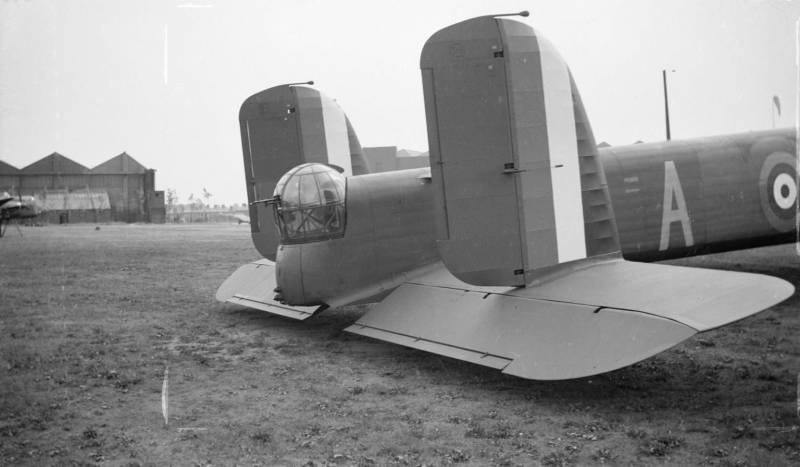
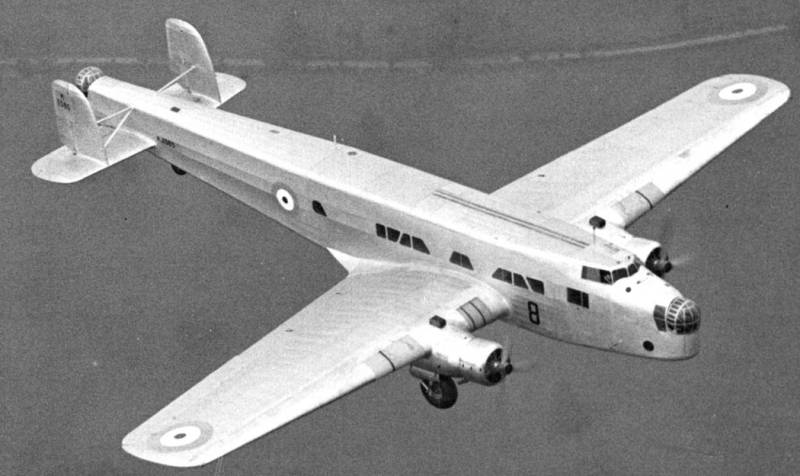
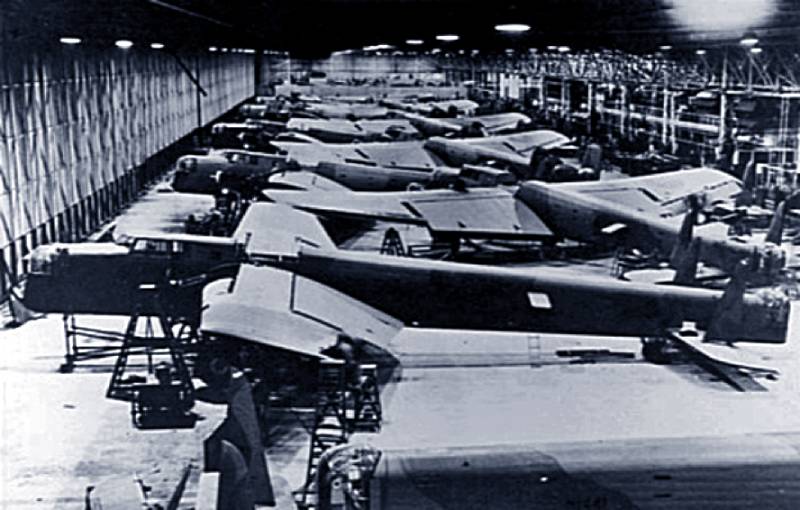
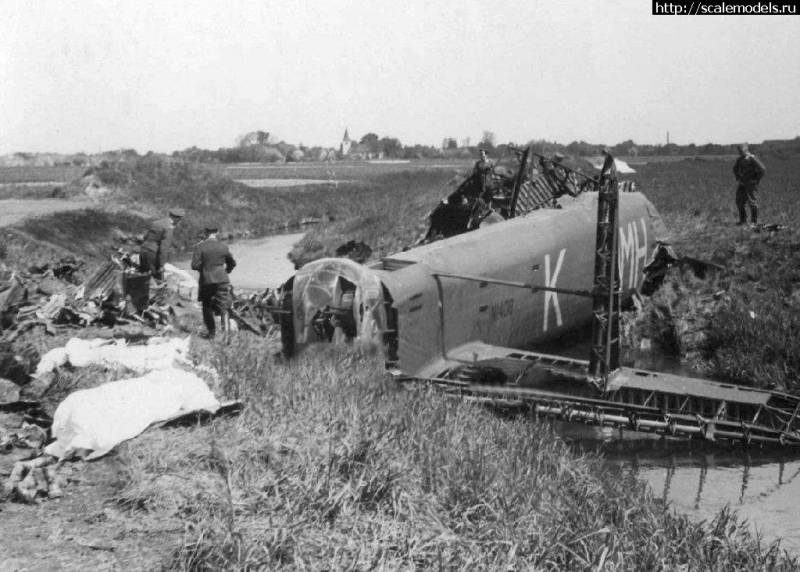
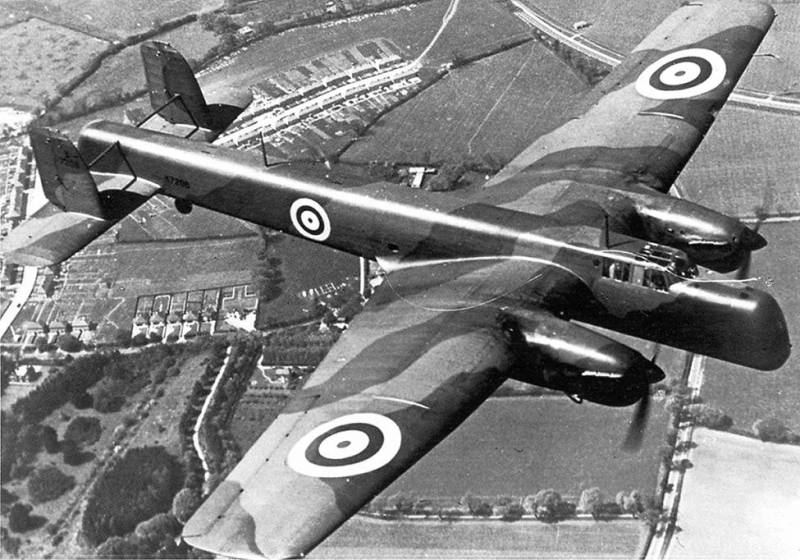
Information